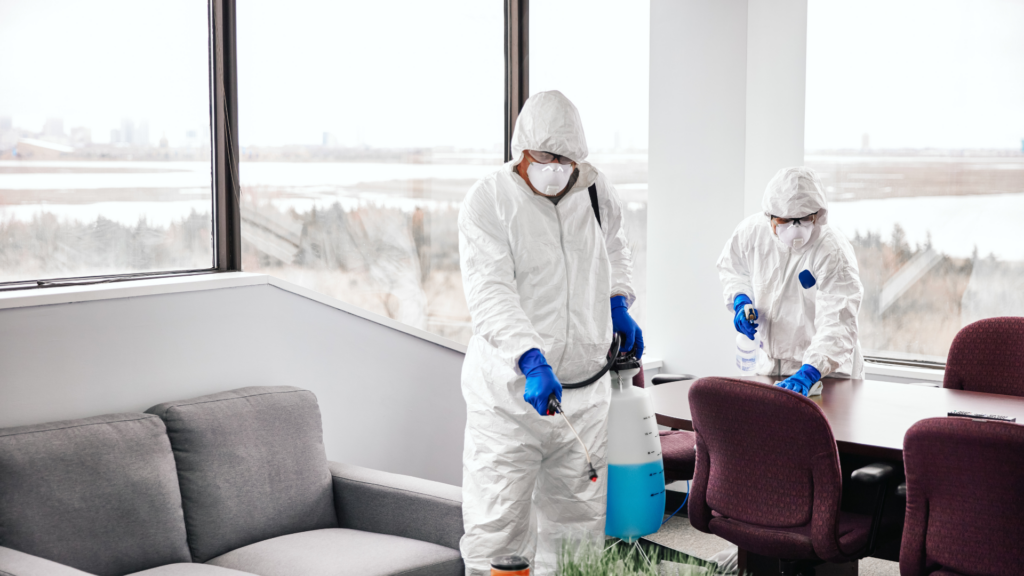
Sanitizing Vs Deep Cleaning
Many people believe that if they clean up a space by removing dirt and dust, they have also sanitized it. Cleaning and sanitizing are two separate procedures with unique outcomes. It’s critical to understand the distinction between cleaning and sanitizing since basic cleaning is seldom adequate to keep people safe from disease transmission. Sirwiss cleaning experts would like to clarify some truths surrounding sanitizing and cleaning, including the distinctions between the two and the situations in which one is preferred over the other.
What is Deep Cleaning?
Some may have specific ways of differentiating general cleaning services from deep cleaning services. However, the term “deep cleaning” may be used to accurately describe a wide variety of cleaning procedures because of its shared characteristics and unique details.
Genral cleaning is the removal of dirt and other particles from a surface. As a result, regular cleaning is defined as the removal of all visible grease, grime, and filth from the surfaces of items with which we come into touch. To prevent illness, we clean the floor, the glasses, the kitchen counter, the beds, all furniture pieces, our automobiles, clothing, and even the electronics we use. The most common cleaning tools are mops, water, soap, detergent, fabric, brooms, brushes, scrubbers, and sponges.
Deep cleaning, on the other hand, requires more effort. It cleans off dirt and grime that has collected over time and is often done overnight or over the weekend by cleaning specialists. Similar to general cleaning, they may scrub carpets which must then dry and then they may apply stronger chemicals. Deep cleaning often includes cleaning areas that are difficult to reach and would be too difficult to clean on a weekly basis. As a result, deep cleanup takes much longer than conventional cleaning.
What is Sanitizing?
Most people associate sanitizing with their toilets, but it stretches beyond that. You may also have heard it used in hospitals and other healthcare settings. After you’ve deep cleaned a surface, the next obvious step is to sanitize it. A Deep cleaning is simply a first step towards sanitization since it only removes visible dirt from a surface. To be bacteria-free, it must be sanitized using a disinfectant. Because sanitizing is a technique for eliminating microorganisms, it is important to take additional steps to avoid the transmission of disease by sanitizing the environment when a member of the family is sick or has a compromised immune system. Sanitizing personnel will wear personal protective equipment (PPE) and utilize specialized instruments such as ultra-low volume (ULV) foggers that distribute chemical agents in this instance.
The Rewards of Cleaning
It is not necessary to sanitize or disinfect all the time. General cleaning helps to maintain an environment healthy for the individuals who live in it. Regular cleaning reduces the number of pathogens and allergens on surfaces, making the atmosphere healthier for inhabitants. People with allergies, for example, are likely to experience improvements in their symptoms following cleaning that eliminates allergens such as dust, pet hair and dander, and so on.
Inadequacies in the General Cleaning Process
It’s true that cleaning may make things seem better, but it doesn’t get rid of all the germs and bacteria that might make you sick. If you mop a floor with a bucket of soapy water, you will distribute germs all over the floor unless the mop water contains a germicide. The same is true if you use a mediocre cleaning solution or a sponge or rag that has been used on several different surfaces before you use it to wash down your kitchen counter. For this reason, it’s best to use experts and Sirwiss is a platform where you may find such expert services even for a basic cleaning task.
The Advantages of Sanitization
When sanitization is implemented correctly, it decreases the volume of germs on surfaces by 99.9%. Sanitization is essential for health and hygiene and is particularly important on common surfaces like countertops, doorknobs, light switches, touchpads, and any surface that comes in contact with bodily fluids. When someone in the household is sick or has a weakened immune system, sanitizing should always be administered. It is essential to follow instructions on the label and use disinfectants effectively in order to destroy microbes. If the product is not applied effectively, the process gives just a false sense of safety. Since sanitation is best left to the experts, Sirwiss can help you connect with cleaning services that share its values.